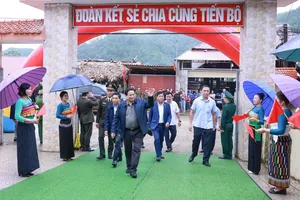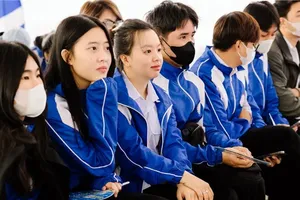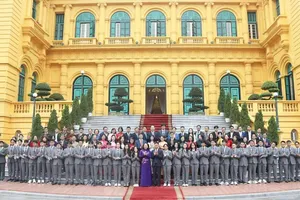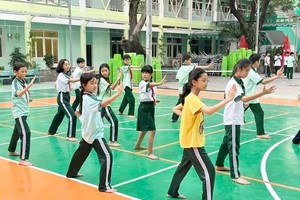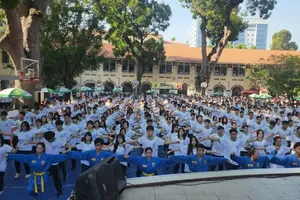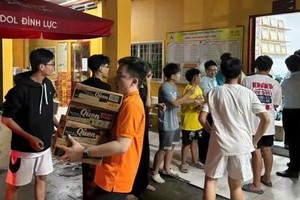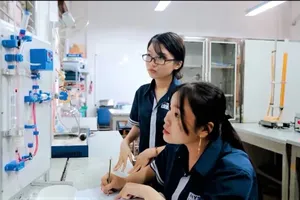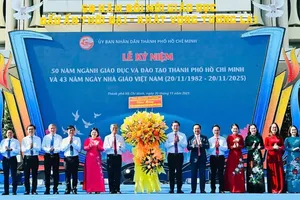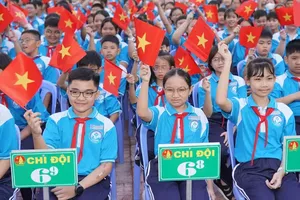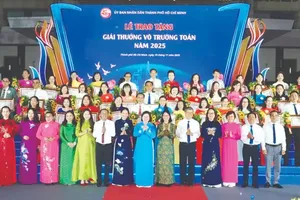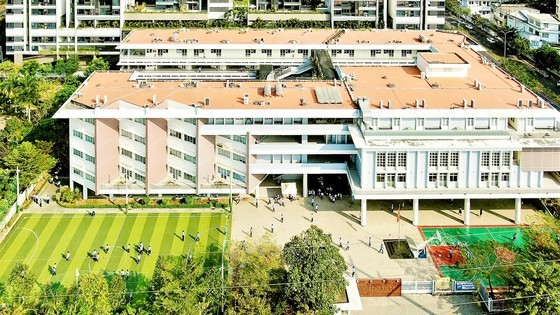 |
Nguyen Van To Secondary School |
Former director of the Ho Chi Minh City Department of Education and Training Huynh Cong Minh recalled that in 1999, although the city's budget was tight, city leaders still decided 20 percent of state budget spending for education by building more schools with 1,118 classrooms in districts. Of which, two-thirds of the classrooms were built in suburban areas and newly developed districts.
As a result, students no long study in third and fourth shifts; moreover, many spacious schools have been put into use. However, by 2003, the city had nearly 700,000 students resulting in a headache for district administrations as there was a severe shortage of schools. The speed of school construction has not kept up with the mechanical population growth because the city has increased by about 40,000 students each year on average.
Ms. Le Thi Ngoc Dung, Vice Chairwoman of Binh Tan District People's Committee, said that in 2003, Binh Tan - the new district - was separated from Binh Chanh outlying district with a population of over 800,000 people. At that time, the district had 31 schools with 542 classrooms to accommodate nearly 26,000 students in all grades. Many degraded schools are in poor repair and they didn’t have enough school places to meet demand.
From that fact, the Department of Education and Training has advised the municipal People's Committee to issue the Decision 02 on planning the school network in 24 districts to tackle the current demand for additional school places. This breakthrough decision has created leverage for districts to develop action programs and planning projects to have more land for education in addition to speeding up the construction of schools.
Gradually, it has eased pressure on the district community amid rapid population growth. Every year, the city budget prioritizes allocating VND3,000-4,000 billion for the construction of schools and classrooms.
Also thanks to the Decision 02, District 10 has relieved the pressure of the lack of study space with many flexible solutions. In particular, the district has not only prioritized the land fund for school construction but also promoted the recovery of project land in addition to the mobilization of financial resources for education and the improvement of training quality.
Chairwoman of District 10 People's Committee Nguyen Thi Thu Huong said that Nguyen Van To Secondary School is one example to clearly demonstrate the district’s comprehensive investment in education over the past 20 years.
Previously, the substandard school with small premises had degraded facilities; accordingly, parents dared not to send their children to study in the school. The People's Committee of District 10 has drastically directed the implementation of the plan to build this new school to meet the national standard in terms of facilities.
Not only District 10 but districts 2,7, 12, Go Vap, Tan Binh, Binh Chanh, Nha Be, and Hoc Mon also decided to overcome difficulties and find solutions to solve difficulties in land acquisition for expansion and building more schools. Head of the Bureau of Education and Training in District 3 Pham Dang Khoa said that from 2003 to now, the district has carried out 102 school construction projects including building 732 new classrooms and hundreds of functional rooms and upgrading and repairing scores of schools.
Particularly in Cu Chi district, thanks to an abundant land fund, many large-scale school construction projects and spacious facilities have been formed and put into use. Up to now, the district has carried out over 100 projects to build and repair schools with about 2,000 classrooms. Some schools such as Tan Thong Hoi Kindergarten, An Phu Primary School, and a secondary school in Cu Chi Town have just been inaugurated with spacious and modern facilities.
Furthermore, from the 2014-2015 school year, Ho Chi Minh City started piloting the model of ‘Advanced schools following the trend of regional and international integration’. This policy is considered the basis for promoting more financial resources and social contributions to the education sector.
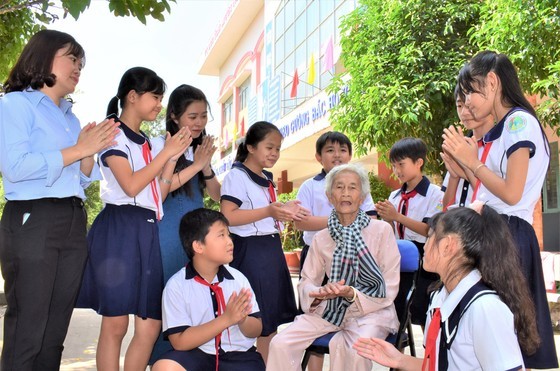 |
| Vietnamese Heroic Mother Kieu Thi Nong and children in a local school in Cu Chi District, HCMC |
After 10 years of implementation, the model has confirmed its success in a series of schools such as Le Quy Don High School in District 3, Nguyen Du High School in District 10, Nguyen Hien High School in District 11, Huynh Khuong Ninh Secondary School in District 11, Tran Quoc Toan Secondary School in Thu Duc City.
In Dong Lon hamlet in Cu Chi outlying district’s Trung Lap Thuong commune, 87-year-old Vietnamese Heroic Mother Kieu Thi Nong donated nearly 3,000 square meters of land to the locality for the construction of rural roads, and drainage channels; plus, she encouraged her family members to donate additional 800 square meters of land to build schools.
Vice Chairman of Trung Lap Thuong Commune People's Committee Nguyen Thi My Linh said that thanks to those people such as mother Kieu Thi Nong and her family; 1,290 households have so far agreed to donate nearly 90,400 square meters of residential land to the commune administration to build schools, rural roads, drainage channels.
In District 12, in the past 20 years, residents have donated a total of 285,000 square meters of land worth nearly VND1,800 billion for building roads and schools. Elsewhere in the city, residents in Can Gio outlying district and Binh Chanh district have given nearly 340,000 square meters and more than 300,000 square meters respectively to local authorities for building public sites.

